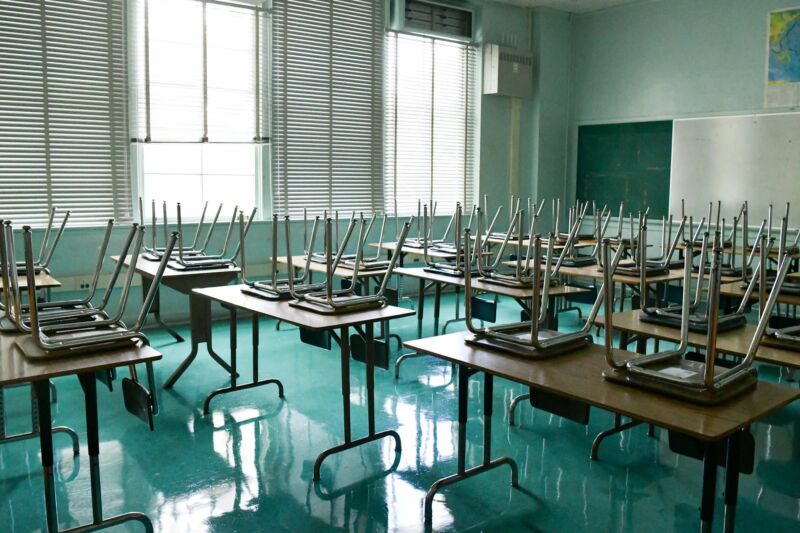
Enlarge (credit: Robin Eckenroth | Getty Images)
Last fall, Jeff Kreiter, director of operational services for the school district in Sioux Falls, South Dakota, found himself flooded with proposals to clean the air inside classrooms. The ideas varied—UV lights, air exchangers, a wide array of filters—but one looked especially promising: a bipolar ionizer. The system involved a set of electrified tubes, placed in air ducts, that would flood the buildings with charged particles, or ions. Marketing materials from the company AtmosAir promised that this would eliminate pollutants and viruses by emulating the ion-rich air found in an alpine village. The district paid a local vendor $2 million to install the system in 33 school buildings. “Ultimately we wanted to kill the virus and have a healthier environment, but we wanted this long-term and not just for corona,” Kreiter says.
The science behind those ion-producing tubes reads like an elegant example from a high school textbook. The ions are meant to induce what chemists call “coagulation.” Like blood cells clotting a wound, particles of opposite charge glom together, capturing nasty things that you don’t want in your lungs, like pollen and mold. Eventually, those clumps grow large enough that gravity takes over and they fall harmlessly to the ground. With viruses, there’s another benefit: the ions gum up surface proteins used to enter cells, making them less effective invaders. The result, and the banner claim made in the company’s pitch to schools during the pandemic, is a 99.92 percent reduction in coronavirus within 30 minutes.





